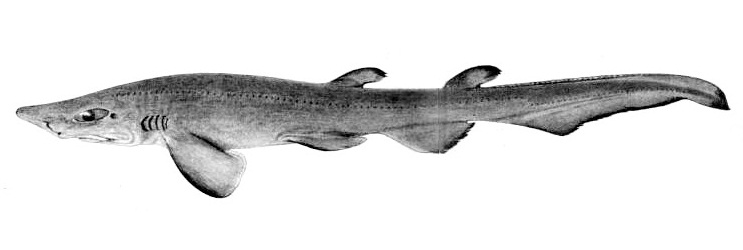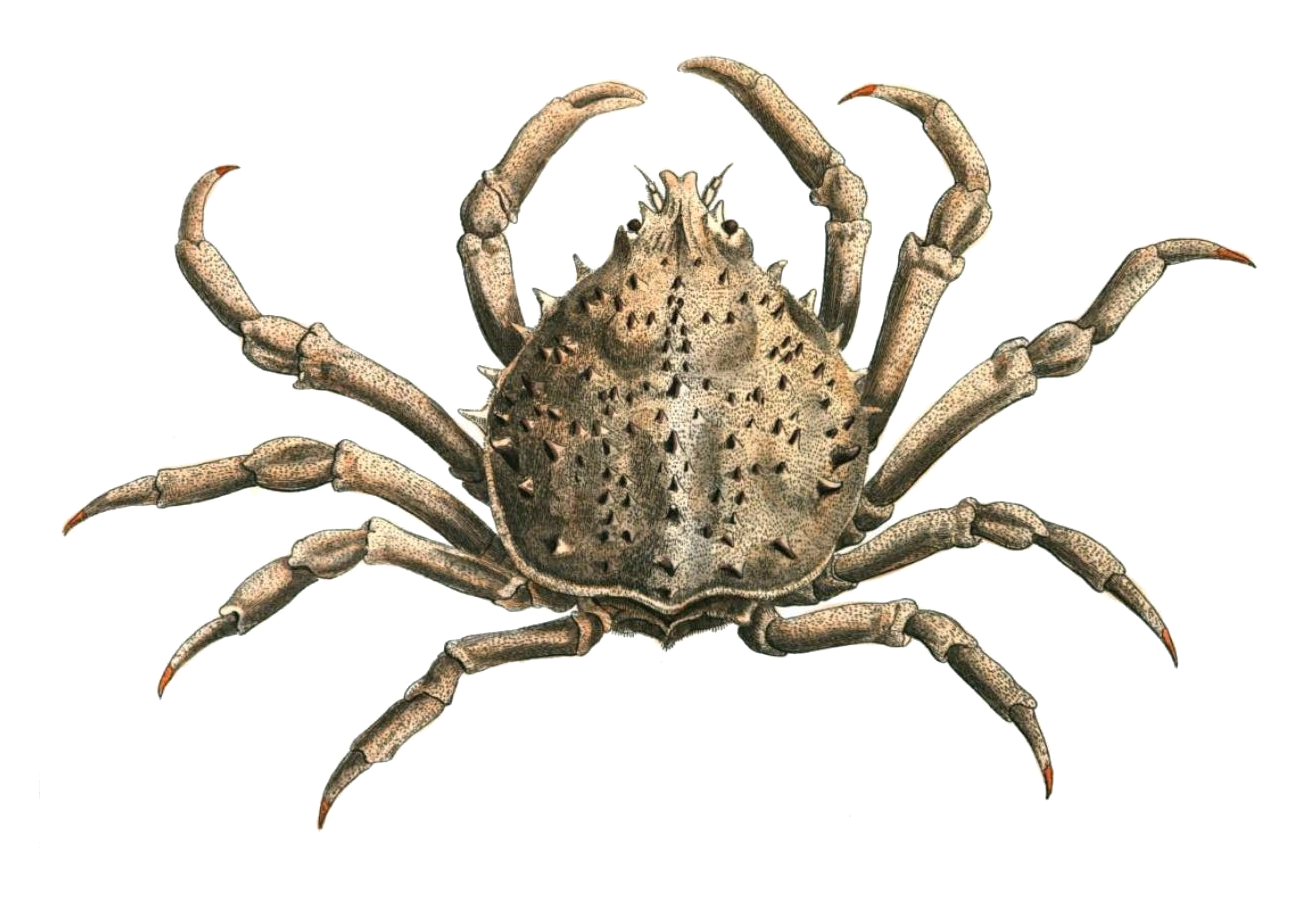|
Galeus Aduncus
''Galeus'' is a genus of catshark, belonging to the family Scyliorhinidae, commonly known as sawtail catsharks in reference to a distinctive saw-toothed crest of enlarged dermal denticles, found along the upper edges of their caudal fins. They are found in the Atlantic, the western and central Pacific, and the Gulf of California, inhabiting deep waters at or close to the sea floor. Members of this genus are rather small, slim sharks with firm bodies and thick, rough skin. Their heads are usually fairly long and pointed, and have large mouths with well-developed furrows at the corners. They have large pectoral and anal fins, and two similar dorsal fins placed well back. Many species are ornately patterned with dark saddles and/or blotches. Sawtail catsharks feed on various invertebrates and fishes, and may be either egg-laying or live-bearing. These harmless sharks are sometimes caught as bycatch but are of minimal commercial value. Taxonomy ''Galeus'', derived from the Greek ... [...More Info...] [...Related Items...] OR: [Wikipedia] [Google] [Baidu] |
Blackmouth Catshark
The blackmouth catshark (''Galeus melastomus'') is a species of catshark, and part of the family Scyliorhinidae, common in the northeastern Atlantic Ocean from Iceland to Senegal, including the Mediterranean Sea. It is typically found over the continental slope at depths of , on or near muddy bottoms. The youngest sharks generally inhabit shallower water than the older juveniles and adults. This slim-bodied species is characterized by the black interior of its mouth, a marbled pattern of pale-edged brownish saddles or blotches along its back and tail, and a prominent saw-toothed crest of enlarged dermal denticles along the upper edge of its caudal fin. It reaches lengths of , with sharks in the Atlantic growing larger than those in the Mediterranean. Slow-swimming but active, the blackmouth catshark is a generalist that preys on a wide variety of crustaceans, cephalopods, and fishes. Its visual and electroreceptive systems are adept at tracking moving, bioluminescent prey. This ... [...More Info...] [...Related Items...] OR: [Wikipedia] [Google] [Baidu] |
Oviparous
Oviparous animals are animals that lay their eggs, with little or no other embryonic development within the mother. This is the reproductive method of most fish, amphibians, most reptiles, and all pterosaurs, dinosaurs (including birds), and monotremes. In traditional usage, most insects (one being '' Culex pipiens'', or the common house mosquito), molluscs, and arachnids are also described as oviparous. Modes of reproduction The traditional modes of reproduction include oviparity, taken to be the ancestral condition, traditionally where either unfertilised oocytes or fertilised eggs are spawned, and viviparity traditionally including any mechanism where young are born live, or where the development of the young is supported by either parent in or on any part of their body. However, the biologist Thierry Lodé recently divided the traditional category of oviparous reproduction into two modes that he named ovuliparity and (true) oviparity respectively. He distinguis ... [...More Info...] [...Related Items...] OR: [Wikipedia] [Google] [Baidu] |
Mustelus
''Mustelus'', also known as the smooth-hounds, is a genus of sharks in the family Triakidae. The name of the genus comes from the Latin word ''mustela'', meaning weasel. It should not be confused with the genus name ''Mustela'', which is used for weasels. A smooth-hound can grow to 159 cm (5 ft. 3 in.) long and weigh more than 13 kg (29 lb). Species Currently, 28 recognized species are placed in this genus: * '' Mustelus albipinnis'' Castro-Aguirre, Antuna-Mendiola, González-Acosta & De La Cruz-Agüero, 2005 (white-margin fin houndshark) * '' Mustelus andamanensis'' White, Arunrugstichai & Naylorn, 2021 (Andaman smooth-hound) * '' Mustelus antarcticus'' Günther, 1870 (gummy shark) * ''Mustelus asterias'' Cloquet, 1821 (starry smooth-hound) * '' Mustelus californicus'' T. N. Gill, 1864 (gray smooth-hound) * '' Mustelus canis'' Mitchill, 1815 ** '' M. c. canis'' Mitchill, 1815 (dusky smooth-hound) ** '' M. c. insularis'' Heemstra, 1997 (Caribbean ... [...More Info...] [...Related Items...] OR: [Wikipedia] [Google] [Baidu] |
William Elford Leach
William Elford Leach FRS (2 February 1791 – 25 August 1836) was an English zoologist and marine biologist. Life and work Elford Leach was born at Hoe Gate, Plymouth, the son of an attorney. At the age of twelve he began a medical apprenticeship at the Devonshire and Exeter Hospital, studying anatomy and chemistry. By this time he was already collecting marine animals from Plymouth Sound and along the Devon coast. At seventeen he began studying medicine at St Bartholomew's Hospital in London, finishing his training at the University of Edinburgh before graduating MD from the University of St Andrews (where he had never studied). From 1813 Leach concentrated on his zoological interests and was employed as an 'Assistant Librarian' (what would later be called Assistant Keeper) in the Natural History Department of the British Museum, where he had responsibility for the zoological collections. Here he threw himself into the task of reorganising and modernising these coll ... [...More Info...] [...Related Items...] OR: [Wikipedia] [Google] [Baidu] |
Galeorhinus
The school shark (''Galeorhinus galeus'') is a houndshark of the family Triakidae, and the only member of the genus ''Galeorhinus''. Common names also include tope, tope shark, snapper shark, and soupfin shark. It is found worldwide in temperate seas at depths down to about . It can grow to nearly long. It feeds both in midwater and near the seabed, and its reproduction is ovoviviparous. This shark is caught in fisheries for its flesh, its fins, and its liver, which has a very high vitamin A content. The IUCN has classified this species as critically endangered in its Red List of Threatened Species. Description The school shark is a small, shallow-bodied shark with an elongated snout. The large mouth is crescent-shaped and the teeth are of a similar size and shape in both jaws. They are triangular-shaped, small, and flat, set at an oblique angle facing backwards, serrated and with a notch. The spiracles are small. The first dorsal fin is triangular with a straight leading edge ... [...More Info...] [...Related Items...] OR: [Wikipedia] [Google] [Baidu] |
Scyliorhinus Canicula
''Scyliorhinus'' is a genus of catsharks in the family Scyliorhinidae. This genus is known in the fossil records from the Cretaceous period, late Albian age to the Pliocene epoch.Carrier, J. C.; Musick, J. A. & Heithaus, M. R. (2004)''Biology of Sharks and Their Relatives'' Species There are currently 16 recognized species in this genus: * '' Scyliorhinus boa'' Goode & T. H. Bean, 1896 (boa catshark) * '' Scyliorhinus cabofriensis'' K. D. A. Soares, U. L. Gomes & M. R. de Carvalho, 2016Soares, K.D.A., Gomes, U.L. & De Carvalho, M.R. (2016): Taxonomic review of catsharks of the ''Scyliorhinus haeckelii'' group, with the description of a new species (Chondrichthyes: Carcharhiniformes: Scyliorhinidae). ''Zootaxa, 4066 (5): 501-534.'' * '' Scyliorhinus canicula'' (Linnaeus, 1758) (small-spotted catshark) * ''Scyliorhinus capensis'' ( J. P. Müller & Henle, 1838) (yellowspotted catshark) * ''Scyliorhinus cervigoni'' Maurin & M. Bonnet, 1970 (West African catshark) * ''Scyliorhi ... [...More Info...] [...Related Items...] OR: [Wikipedia] [Google] [Baidu] |
Mustelus Mustelus
The common smooth-hound (''Mustelus mustelus'') is a houndshark of the family Triakidae. It is found in the eastern Atlantic Ocean from the British Isles to South Africa, and in the Mediterranean Sea, Madeira, and the Canary Islands at depths ranging from 5 m to 625 m (although they usually stay at depths between 5-50m). While they can grow to 200 cm, their usual maximum size is 150 cm. They commonly grow to 100–120 cm with a birth length around 35 cm. The reproduction of commons smooth-hounds is viviparous. Morphology and behavior The common smooth-hound has a grey-brown back and is white on its underneath. It is often confused with the starry smooth-hound which has white spots on its back. The starry smooth-hound can often have faded spots which leads to misidentification. Another shark it is often confused with is the tope shark although the common smooth hound has a larger second dorsal fin. Due to the similarities between the common smooth-hound and ... [...More Info...] [...Related Items...] OR: [Wikipedia] [Google] [Baidu] |
Alopias Vulpinus
The common thresher (''Alopias vulpinus''), also known as Atlantic thresher, is the largest species of thresher shark, family Alopiidae, reaching some in length. About half of its length consists of the elongated upper lobe of its caudal fin. With a streamlined body, short pointed snout, and modestly sized eyes, the common thresher resembles (and has often been confused with) the pelagic thresher (''A. pelagicus''). It can be distinguished from the latter species by the white of its belly extending in a band over the bases of its pectoral fins. The common thresher is distributed worldwide in tropical and temperate waters, though it prefers cooler temperatures. It can be found both close to shore and in the open ocean, from the surface to a depth of . It is seasonally migratory and spends summers at lower latitudes. The long tail of the common thresher, the source of many fanciful tales through history, is used in a whip-like fashion to deliver incapacitating blows to its prey. T ... [...More Info...] [...Related Items...] OR: [Wikipedia] [Google] [Baidu] |
Binomial Nomenclature
In taxonomy, binomial nomenclature ("two-term naming system"), also called nomenclature ("two-name naming system") or binary nomenclature, is a formal system of naming species of living things by giving each a name composed of two parts, both of which use Latin grammatical forms, although they can be based on words from other languages. Such a name is called a binomial name (which may be shortened to just "binomial"), a binomen, name or a scientific name; more informally it is also historically called a Latin name. The first part of the name – the '' generic name'' – identifies the genus to which the species belongs, whereas the second part – the specific name or specific epithet – distinguishes the species within the genus. For example, modern humans belong to the genus '' Homo'' and within this genus to the species '' Homo sapiens''. '' Tyrannosaurus rex'' is likely the most widely known binomial. The ''formal'' introduction of this system of naming species is ... [...More Info...] [...Related Items...] OR: [Wikipedia] [Google] [Baidu] |
Carcharhiniformes
Carcharhiniformes , the ground sharks, are the largest order of sharks, with over 270 species. They include a number of common types, such as catsharks, swellsharks, and the sandbar shark. Members of this order are characterized by the presence of a nictitating membrane over the eye, two dorsal fins, an anal fin, and five gill slits. The families in the order Carcharhiniformes are expected to be revised; recent DNA studies show that some of the conventional groups are not monophyletic. The oldest members of the order appeared during the Middle-Late Jurassic, which have teeth and bodyforms that are morphologically similar to living catsharks. Carchariniformes first underwent major diversification during the Late Cretaceous, initially as small-sized forms, before radiating into medium and large body sizes during the Cenozoic. Families According to FishBase, the nine families of ground sharks are: [...More Info...] [...Related Items...] OR: [Wikipedia] [Google] [Baidu] |
Greek Language
Greek ( el, label= Modern Greek, Ελληνικά, Elliniká, ; grc, Ἑλληνική, Hellēnikḗ) is an independent branch of the Indo-European family of languages, native to Greece, Cyprus, southern Italy (Calabria and Salento), southern Albania, and other regions of the Balkans, the Black Sea coast, Asia Minor, and the Eastern Mediterranean. It has the longest documented history of any Indo-European language, spanning at least 3,400 years of written records. Its writing system is the Greek alphabet, which has been used for approximately 2,800 years; previously, Greek was recorded in writing systems such as Linear B and the Cypriot syllabary. The alphabet arose from the Phoenician script and was in turn the basis of the Latin, Cyrillic, Armenian, Coptic, Gothic, and many other writing systems. The Greek language holds a very important place in the history of the Western world. Beginning with the epics of Homer, ancient Greek literature includes many works of l ... [...More Info...] [...Related Items...] OR: [Wikipedia] [Google] [Baidu] |







